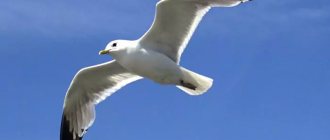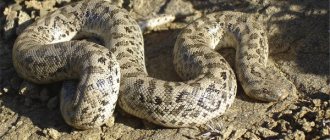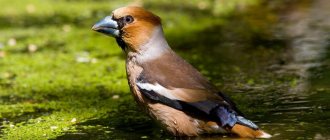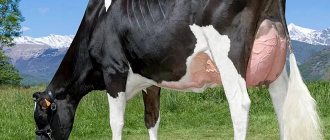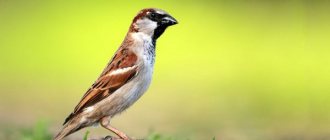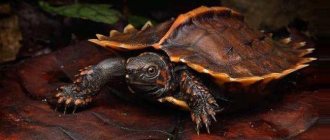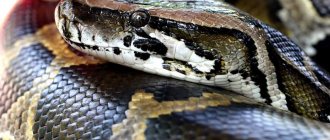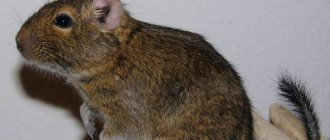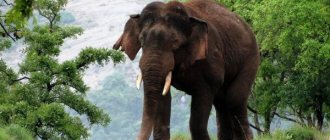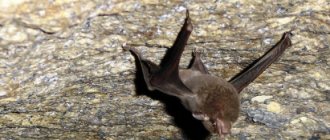The swan bird is a symbol of beauty, tenderness and grace. Thanks to their proud posture, these beautiful creatures are known all over the world and are constant heroes of a number of fairy tales, legends, traditions and modern cartoons. Many species of swans are permanent residents of city ponds, where people feed them. In addition, recently the practice of breeding swans in captivity for further maintenance in frequent artificial ponds and reservoirs.
The swan bird is a symbol of beauty, tenderness and grace.
These birds are under special protection in some regions of the planet, so their numbers remain stable. Some breeds of swans, which were in danger of extinction, were diverted from this dangerous trait due to the measures taken. Now their numbers are gradually recovering. Thanks to the increased attention from ornithologists, many interesting facts about swans, their life and behavior in the wild have become known to the general public.
Where do swans live?
Thanks to modern tools used to track the movements of wild birds, much more is known about their distribution areas than 50 years ago. Not only its appearance, but also its lifestyle depends on where a swan lives. The most numerous northern species tend to be migratory birds. In summer, they are found in tundra and forest areas of America and Europe. Here, during a period of abundance, they try to hatch chicks and fatten.
Some species of these unique birds are actively settling in the middle zone. This largely depends on whether there are freshwater bodies of water in a particular region that can provide these large birds with the necessary amount of food. Typically, northern species of swans migrate to more southern regions for the winter, populating the waters of Africa, India and some remote islands. Obtaining this information was made possible thanks to sensors that ornithologists studying the behavior of these birds attached to the legs of individual individuals. It became known that these birds do not always return to the same wintering place as in previous years.
When flying from the northern meadows, the American swan tries to find a suitable body of water in the south, that is, on the California coast and Florida, where it will be reliably protected from human eyes and predators. This species is protected because its numbers are not too high. The white swan can sometimes winter in the middle zone, inhabiting large urban reservoirs where the water does not freeze. Here the birds rely on regular feeding from people. The exact criteria for choosing a wintering site are unknown.
Thanks to their proud posture, these beautiful creatures are known all over the world.
Small populations live in Central Asia and northern Africa. In addition, the birds are found in New Zealand and Australia. In regions where the air temperature does not drop to critical levels, birds may not make long migrations. They typically live in tropical swamps and lakes. Usually these birds live in pairs throughout the year, protecting their chosen area from other birds. None of the swan species will tolerate invaders near them. They fiercely defend the territory they occupy.
Natural enemies
Adult swans have few natural enemies, as they are strong enough to drive away almost any predator. As for chicks, in Eurasia their natural enemies are usually foxes and birds of prey, such as osprey or golden eagle, as well as skuas and gulls. Brown bears and wolves can also encroach on a nest or a brood of swans. Arctic foxes can also pose a danger to birds living in the tundra.
This is interesting! Bears and wolves are the only predators that can pose a danger not only to chicks, but also to adult swans.
For species living in North America, natural enemies are also raven, wolverine, otter, raccoon, puma, lynx, hawk, owl, and even one of the turtles living in America can hunt chicks. And the swans living in Australia, in addition to birds of prey, should also be wary of wild dingoes - the only predatory animals settled on this continent.
Return to content
Gallery: swan bird (25 photos)
Small (Cygnus bewickii)
Externally it looks like a whooper, body length – 140 cm, wingspan – 200-210 cm, beak short, yellow-black. Feature: the pattern on the beak is individual for each individual of the same species. Endemic to Russia, in particular to Chukotka and the Kola Peninsula. Its characteristics are similar to the American tundra. Lifespan in captivity is up to 20 years. A rare bird, included in the Red Book of the Russian Federation.
Appearance
Most people know from early childhood what this majestic bird looks like. This is due to the fact that swans have a number of characteristics that distinguish them from other members of the family. Birds are the largest waterfowl found in nature. Depending on the variety, the body length of the bird can vary from 1.2 to 1.8 m. The wingspan usually ranges from 2 to 3 m. The weight of a swan, depending on its variety, can range from 5-6 to 8-12 kg. The physique is very dense. The wings are strong and wide, which allows them to support a fairly large body weight. Considering the description of the swan, special attention is drawn to the long S-shaped neck.
Each species of these waterfowl has its own neck posture. For example, some species of these birds hold their necks vertically, while others bend their necks strongly. They need such a long neck for balance. The beak of birds is quite large in size. It is slightly flattened and wide. Some varieties have a characteristic thickening at the base.
The beak of a swan, depending on its breed, can be pure black, red or yellow, or include a combination of these colors.
Despite the fact that, when on the surface of the water, these birds look airy and graceful, on land they are very clumsy. This is due to the fact that their paws are relatively short and equipped with membranes. This makes it much more difficult to move on a hard surface. The paws are positioned so as to make it easier for the swan to swim. Usually the lower limbs are dark in color.
These birds have a rather short tail. Below it is the so-called coccygeal gland. Almost all waterfowl have it. This gland is necessary for the production of waxy fat, which is later used by the bird to lubricate its plumage. This treatment makes it waterproof. In most cases, the plumage of adults is a single color of gray, black or white, but some varieties have combinations of these colors. The swan's plumage is very soft to the touch, so these birds often became victims of people who wanted to get them. The young are easily recognizable as they are gray in color.
Most people know from early childhood what this majestic bird looks like.
Black-necked (Cygnus melanocoryphus)
The neck of a representative of this species is painted black, the rest of the body is snow-white, the beak is gray with a growth. The weight of an adult reaches 6.5 kg, length - up to 140 cm. The black-necked swan lives on small islands or in reeds, where it builds nests. In captivity, the life expectancy of individuals reaches 30 years, in the wild - up to 10. Males carefully guard the female while incubating eggs. Black-necked chicks are very active, often moving around while sitting on the back of their mother or father.
Lifestyle of swans
The main elements for this bird are air and water. Thanks to their unique body structure and very dense plumage, these majestic creatures are able to rise to a height of about 8000 m. Swans are monogamous creatures. They spend their entire life together with their partner. If one of the birds in a pair dies, the second can find a new mate, provided that it is young enough. Old individuals can spend the rest of their lives alone. Most species of these birds make long migrations. At the same time, there are also those who live sedentary lives. Swans, like all waterfowl, consume a wide variety of food that they can obtain in and around a body of water. Birds' diet usually includes:
- seaweed;
- roots;
- small aquatic insects;
- frogs;
- small fish;
- crustaceans;
- herbs.
Swan secrets
The swan is mysterious and beautiful. It is no coincidence that in England it was recognized as the royal bird. From childhood, a person is accompanied by a fairy-tale image that personifies goodness, loyalty and nobility.
A real swan in nature is no less attractive for its grandeur, grace, and perfection. This is the largest of the waterfowl. The combination of beauty and strength impresses everyone who has seen a flock of swans in flight. The name of the birds goes back to the ancient meanings of the words “brilliant”, “sparkling”.
Behavior of swans during the breeding season
Despite the fact that birds arrive at their nesting sites quite early, their mating games generally begin in late spring, when the temperature has already become stable. First, a pair of swans engages in courtship, performing special synchronized movements that allow them to renew their existing relationship. Next, the female swan, having found a secluded place in the sedge, begins building a nest. This place should be so large that the female can safely incubate eggs in the future. It can be from 1.5 to 3 m in diameter. The height of a swan's nest can reach 0.8 m. Usually there are from 3 to 9 eggs in a clutch.
Incubation is usually done by the female. The incubation period is usually 33 to 40 days.
Not everyone knows the name of a baby swan. In fact, there is no separate word for the young of this species. At the same time, it has long been customary to call swan chicks “ugly ducklings.” Externally there is a certain similarity. Typically, chicks have gray plumage. After hatching, the young dry out and can immediately begin to feed on their own under the close attention of their parents. This is the most dangerous period in the life of chicks. Predators strive to feast on young animals, so their safety depends on the vigilance of adults.
American (Cygnus columbianus)
The smallest representative of all species. Its dimensions do not exceed 146 cm in length, and its weight reaches 10 kg. It looks like a whooper, but its neck is shorter, its size is more modest, and its head has a rounded shape. The beak is yellow with an admixture of black. When the female incubates the nest, the male jealously protects her. American swans nest on the outskirts of reservoirs and in mossy areas of the tundra. Life expectancy in captivity is about 29 years.
Consolidation test
Question 1. The closest relatives of swans are:
- Geese.
- Pelicans.
- Loons.
Answer: 1
Question 2. Swan chicks are called ugly ducklings because:
- They look like ducklings.
- For the gray color of the fluff.
- They don't listen to their parents.
Answer: 2
Question 3. Swans get food:
- In water.
- On the trees.
- Among the stones.
Answer: 1
Question 4. Bird color options:
- Colored.
- Achromatic.
- Only gray ones.
Answer: 2
Question 5. Swans love to sleep:
- On tree branches.
- On the grass.
- On the water surface.
Answer: 3
Interesting Facts
- Birds have a bad temperament, they are timid and do not approach people well.
- They love to move on water, but are clumsy on land.
- In Britain, the capture of swans is prohibited by law, and all birds of these species are considered the property of the royal family.
- Sometimes black swans can create homosexual couples. After laying an egg, such a couple may even expel the female in order to incubate the egg in turns.
- The warmer the region where it lives, the darker the color of the bird.
- These birds are wonderful parents. They nurse their babies until they are 2 years old, helping them get their own food and taking care of them.
- An adult bird can attack a person and even break his bone.
origin of name
The swan was called a whooper because of its unique and very characteristic ringing, trumpet sounds. Most often, birds vocalize in the spring, during the mating season, during migration, and also in case of danger. Sounds differ in their volume, duration and appearance. To communicate with babies, birds prefer a quiet click; in case of irritation, they make a sound more like a loud snake hiss, and in normal situations they produce multiple “clicks”, which can sometimes be heard for many kilometers.
Nutrition
Birds feed on food of both plant and animal origin. But their entire diet is inextricably linked with water and consists of:
- aquatic plants,
- algae,
- Duckweeds,
- Small invertebrates,
- fish fry,
- shellfish,
- Crustaceans,
- Insects and their larvae.
It is very rare to see a whooper swan nibbling grass near a pond, as other members of the order do.
Only during migration can whoopers land on the ground far from lakes and rivers and feast on worms, cereals, seeds, roots and berries. The explanation is simple - during migration, swans need food richer in proteins.
Habitat
Whoopers winter in warm regions: on the Mediterranean coast, China and Korea, Iran, Azerbaijan, Turkmenistan (coastal Caspian regions). Some populations living on the shores of the Baltic Sea sometimes remain for the winter, and fly only in the event of a very cold and snowy winter.
The birds' nesting area is quite extensive: from Scotland and the Scandinavian countries to Sakhalin. More southern populations live in the Astrakhan region and Altai Territory, Mongolia, the northern provinces of Japan, Switzerland, and Austria. Much less often, whoopers can be found in the central regions of Russia, Siberia, and in the countries of Southern and Central Europe.
Life process
Swans spend most of their time on the water. They like to settle on reservoirs with banks covered with reeds. The inhabitants of the tropics find places in sea waters with reed beds along the shore. They move along the surface of the lake majestically, slowly.
Dipping their necks underwater in search of food, they create a comical sight - only a downy pillow with a small tail is visible from above. In order to take off, they run through the water, splashing their paws and frequently flapping their wings. They sit down on the water again. Their paws are too short and clumsy for land, and they feel safer on water. In some cases, they can even swim underwater.
They live in families, protecting their territory and seeking privacy. Being in park areas, they quickly get used to the proximity of people and willingly accept food from them.
Habitat
They inhabit the entire Earth, with the exception of the South Pole. Distributed in temperate climate zones. They can live on small lakes, as well as on the shores of seas and estuaries. They are migratory. They winter in southern Asia and the Mediterranean, some fly to the warmest places on the continents.
To prevent the extinction of the population, animal protection societies began to relocate them to new habitats. Thus, mute mules have quite successfully taken root in the territories of South Africa, North America and Australia.
Each species chooses its own nesting and breeding area:
